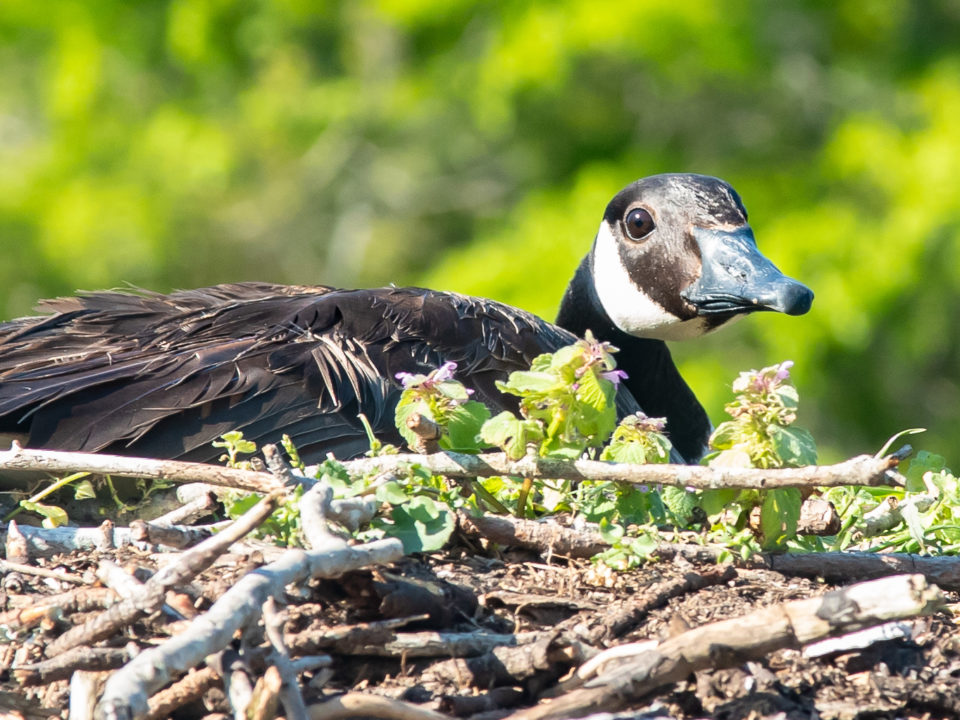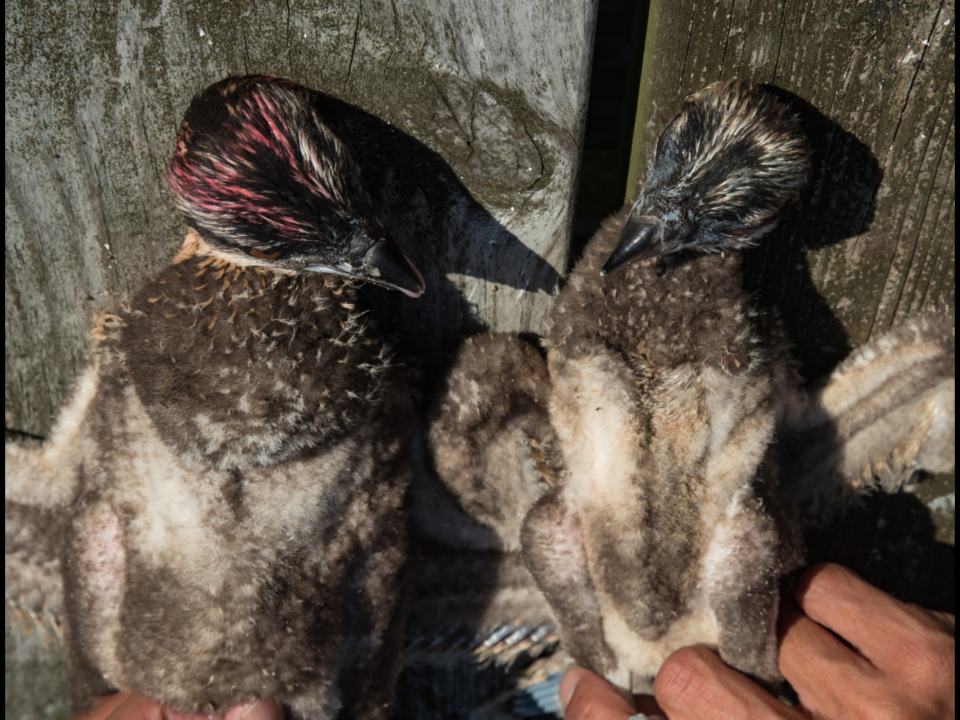Effects of landscape composition on whip-poor-will abundance
Bald Eagle Concentration Areas in the Chesapeake Bay
January 3, 200915th year of sawwhet owl surveys! – results, history, significance
January 5, 2009
Written by Michael Wilson
January 4, 2009

Whip-poor-will, Plum Island, Massachusetts. Photo by Mark J. M. Wilson.
Although the call of the whip-poor-will holds a significant place in folklore and music, and is quickly recognizable to many, the ecology of this species still remains enigmatic. The mysterious aspects of this species’ biology linger mainly because it is nocturnal. Information on whip-poor-whil habitat use and breeding populations is critically important to make informed management decisions to prevent further declines of this species. In an effort to close the information gap on whip-poor-wills, CCB conducted a study that was recently published in the Wilson Journal of Ornithology [ Wilson, M. D. and B. D. Watts. 2008. Landscape configuration effects on distribution and abundance of whip-poor-wills. Wilson Journal of Ornithology 120: 778-783. ] describing the influence that the configuration of different habitats has on abundance and distribution.
Whip-poor-wills respond positively to habitat edges where they can access both nesting and foraging habitats in close proximity.

Whip-poor-wills respond positively to habitat edges where they can access both nesting and foraging habitats in close proximity. Photo by Michael Wilson.
Whip-poor-wills require forested habitat for nesting, but often use and depend on open areas such as marshes, clear-cuts, and shrub barrens for foraging. Because whip-poor-wills require a combination of resources that occur in distinctly different habitats, CCB researchers felt that the spatial arrangement of habitats would ultimately influence their abundance, so we devised a study with funding support from Weyerhaeuser Company to examine this prediction.
CCB began by conducting surveys at night across a large pine plantation landscape owned by Weyerhaeuser Company in coastal North Carolina. What we found supported our contention: the population density of whip-poor-wills was two times higher in places where open clear-cut habitats were immediately available in the landscape compared to areas with only mature forest. We also found that, although whip-poor-wills were more abundant at forest edges, they rarely moved more than 200 meters away from the adjacent forest. This latter finding is important because it illustrates that whip-poor-wills are restricted from using open areas unless associated to a nearby forested edge and that centers of large cut-over patches are not used. Further, it allows us to project population abundance in larger landscapes based on the composition of habitats, the configuration of habitats, and the amount of edge. From a management perspective, whip-poor-will populations benefit the most from forest harvesting strategies that provide sustained yield of numerous small to moderately sized openings that are embedded within larger forest landscapes.

Whip-poor-will abundance was found to be over two times higher where open, regenerating stands were available throughout the landscape. Graph by Michael Wilson.

Whip-poor-wills use open habitats for foraging as a means to exploit greater insect abundance and to use areas that receive more lunar illumination to backlight prey. The upper portion of this diagram shows a backlit moth (prey item). Photo by Michael Wilson.
The response of whip-poor-wills to landscape structure is likely influenced by opportunities to exploit the combination of nesting and foraging habitats in close proximity. Their specific use of open habitats is most likely an opportunity to access better foraging conditions. Breeding and foraging activities of whip-poor-wills are positively related to the presence of moonlight. Whip-poor-wills forage with short upward directed flights to capture aerial insects and are believed to use moonlight help find backlit prey. Open habitats often have a higher abundance of aerial prey and receive more lunar illumination than closed canopy forests. Overall, the positive response of whip-poor-wills to habitat openings follows classic predictions in the spatial ecology of wildlife populations.
Project sponsored by: The Center for Conservation Biology (CCB) & Weyerhauser Company
Related posts
A brood of osprey in Mobjack Bay showing a well-fed chick (left) and an emaciated chick (right). The chick on the right would die the following week due to starvation. Work in Mobjack Bay over a 40+ year period has shown that both reproductive rates and food delivery rates have declined dramatically. The decline in provisioning has led to an increase in brood reduction or chick loss due to starvation. Photo by Bryan Watts.



